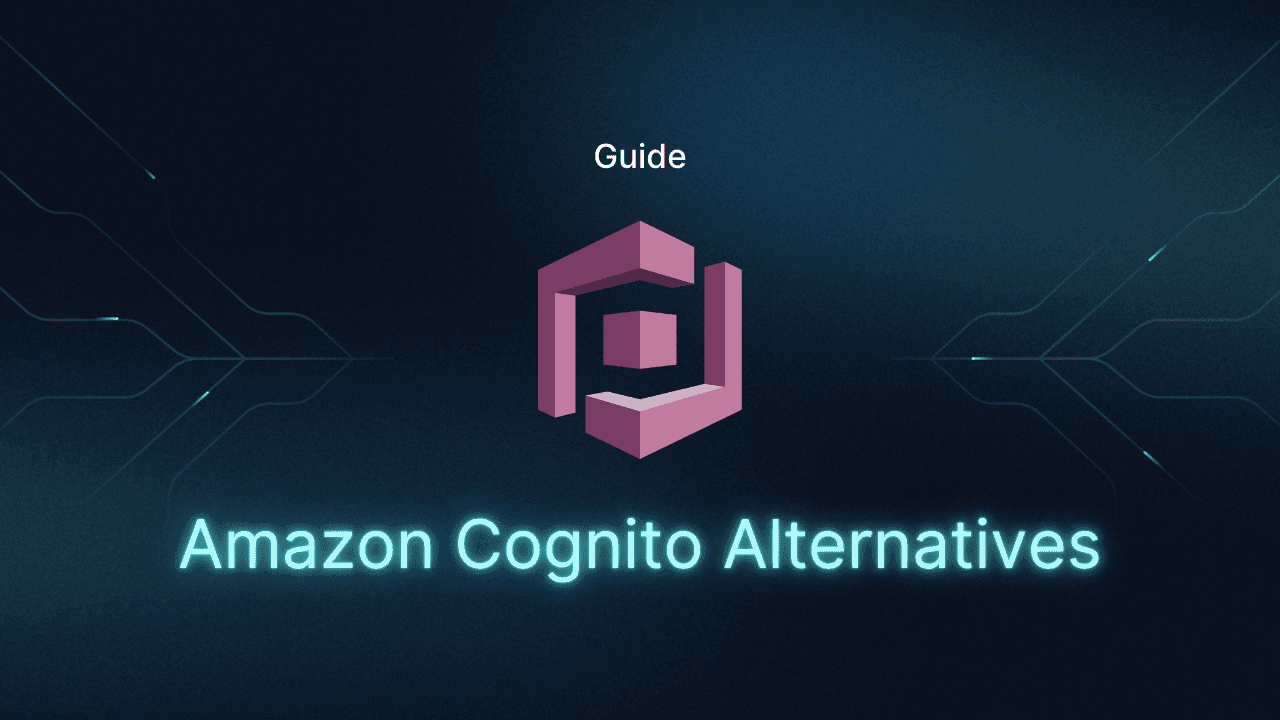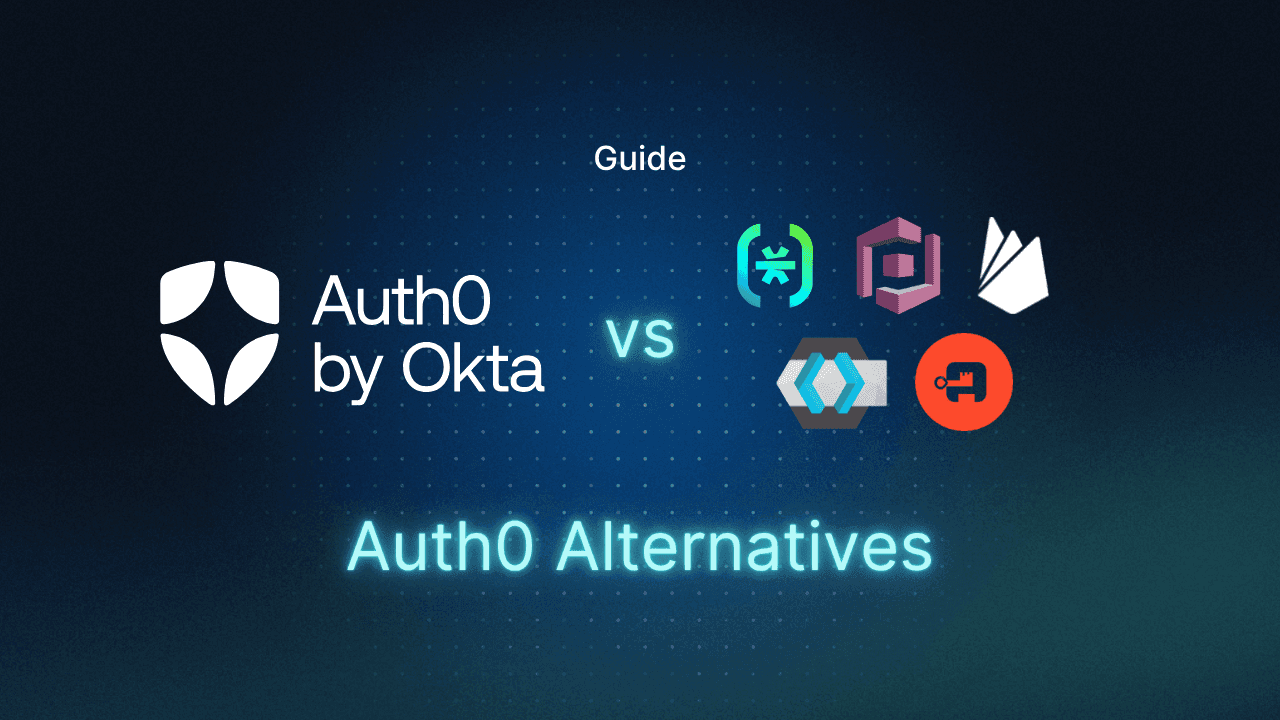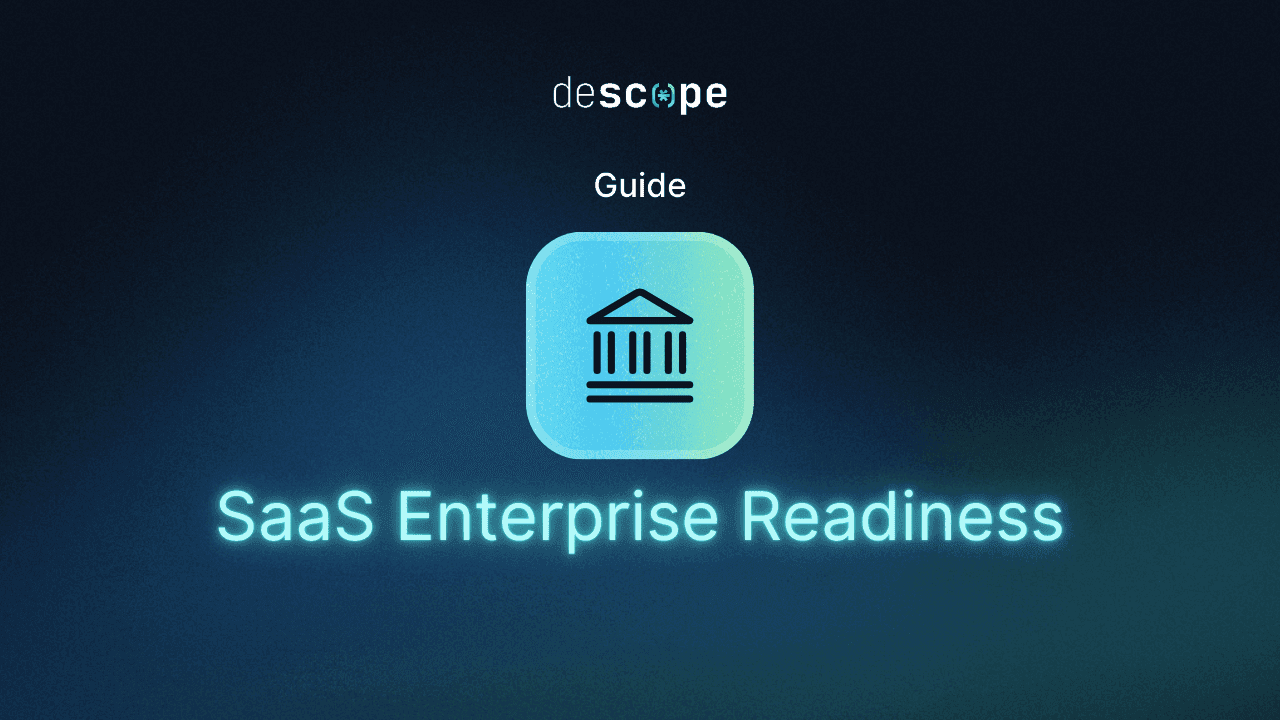Table of Contents
Why developers seek Amazon Cognito alternatives
Amazon Cognito is a popular option for managing user authentication, especially for apps running inside AWS. But as projects grow, many developers start to feel boxed in by Cognito’s limitations and frustrated by cost increases.
Whether it’s unreliable and fluctuating pricing, limited extensibility, or complex setup for B2B identity use cases, teams often find themselves searching for a better fit.
In this guide, we break down common reasons for switching off Cognito and compare five alternatives across features, flexibility, and developer experience.
Why developers seek Amazon Cognito alternatives
Many teams outgrow Cognito for a few key reasons:
Sudden price spikes: Cognito recently introduced a significant price increase for some common login scenarios, especially around advanced security and multi-region deployments.
Limited customization: Customizing login flows or managing tenant-specific journeys often requires complex Lambda functions or deep AWS knowledge.
AWS lock-in: Integrating Cognito with non-AWS services, hybrid cloud, or on-prem apps can be difficult and time-consuming.
Unclear docs and inconsistent support: Developers frequently cite poor documentation and slow support as barriers to efficient implementation.
Each option below is a popular Amazon Cognito alternative, but they differ in strengths depending on your use case.
Descope
Overview
Descope is a modern CIAM platform built for developers who want secure, flexible authentication without added complexity. It’s particularly well-suited for both B2C and B2B SaaS applications that require multi-tenant architectures, offering visual workflows, prebuilt UI components, and native support for partner and agentic AI scenarios.
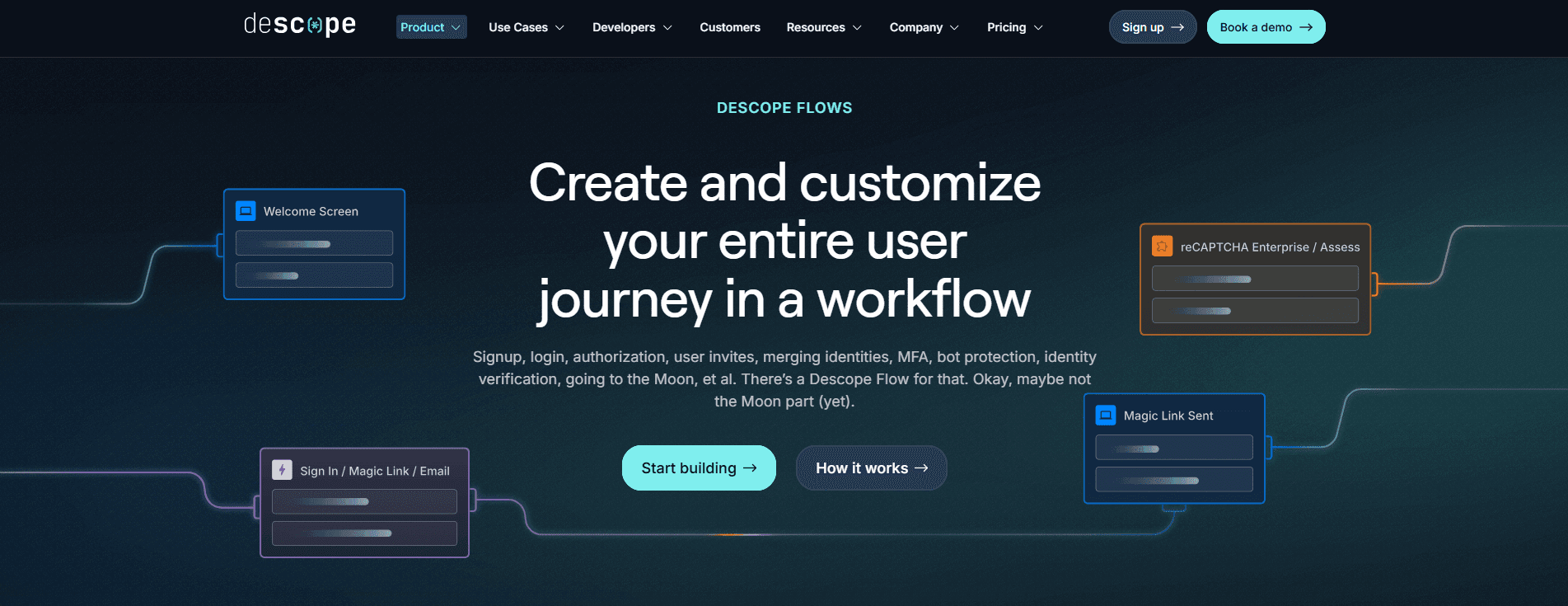
With features like built-in organization management, tenant-specific SSO, and role-based access control, Descope makes it easy to support multi-tenant environments at scale. It also enables identity orchestration for adaptive, context-aware user experiences and supports composable MCP architectures, providing autonomous AI agents with secure, scoped access.
Key capabilities
Drag & drop visual editor to build and update login, signup, and MFA flows without code
Extensive plug & play connector ecosystem for seamless integration with third-party services
Anonymous user tracking for top-of-funnel B2C user visibility
Comprehensive SSO Setup Suite for configuring, mapping, and testing SSO and SCIM connections
Embeddable UI widgets for self-service identity management and admin
Support for a wide range of auth methods including passkeys, OTP, magic links,social login, and Google One Tap
Broad SDK coverage with 15+ SDKs for web, mobile, and backend environments, plus a full-featured REST API
Identity orchestration that coordinates authentication, authorization, risk, and fraud tools
AWS integration made easy
Descope integrates seamlessly into the AWS ecosystem, particularly through our AWS SaaS Builder Toolkit (SBT) plugin, which streamlines authentication for multi-tenant SaaS applications. The DescopeAuth construct deploys the necessary AWS Lambda functions and configuration for authentication operations, including programmatic user management, session validation, and secure machine-to-machine (M2M) authentication via client credentials. Developers can also create tenant-specific admin users and issue Descope JWTs for service-to-service access.
If developers are looking to enhance authentication and MFA while still keeping Amazon Cognito as their user store, Descope can also augment existing Cognito implementations by acting as an OpenID Connect (OIDC) provider. For example, Branch Insurance augmented their Amazon Cognito implementation with Descope passkeys to reduce auth-related support tickets by 50%.
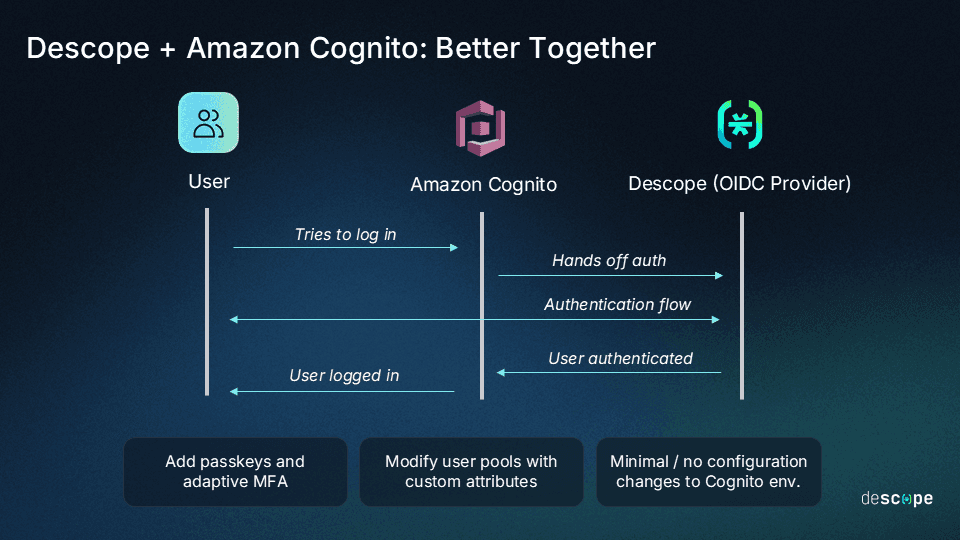
Additionally, Descope Connectors make it easy to plug into native AWS services like S3, SES, SNS, Amazon Translate, and Amazon Rekognition to build richer identity workflows, providing the ultimate flexibility for your organization’s identity requirements.
Strengths
Visual workflows: Descope’s drag & drop editor enables developers to build and customize login, signup, MFA, and SSO flows without requiring backend scripting or custom code. This simplifies implementation and shortens time to production.
Predictable pricing and responsive support: Descope offers transparent, usage-based pricing with no hidden fees or surprise jumps. Teams benefit from fast, knowledgeable support to help them implement, troubleshoot, and scale with confidence, as evidenced by Descope winning the Best Support G2 badge the last four quarters in a row.
Simplified SSO management: Developers can create and manage SSO experiences using visual workflows. Descope also enables self-service configuration and smooth migration of existing identity setups without user disruption.
Native passwordless support: Descope includes built-in support for modern authentication methods such as passkeys, magic links, OTP, and social logins. These options are easy to integrate into any flow, reducing reliance on passwords while improving user experience and security.
Omnichannel authentication: With Descope, authentication flows can be unified across web, mobile, and third-party or partner applications. The same no-code or low-code workflows can be reused across environments, making updates and scaling easier over time.
Built-in adaptive MFA: Adaptive MFA is included as a standard feature in Descope. It allows teams to enforce multi-factor authentication only when necessary, using contextual risk signals from native or third-party sources. A wide range of MFA methods can be integrated directly into your flows without re-architecting your system.
Enterprise agent ready: Descope supports secure authentication and access control for agentic AI systems using Inbound Apps, Outbound Apps, and MCP Auth SDKs. Outbound Apps can integrate with Amazon Bedrock agents to enable seamless connections with 50+ third-party tools.
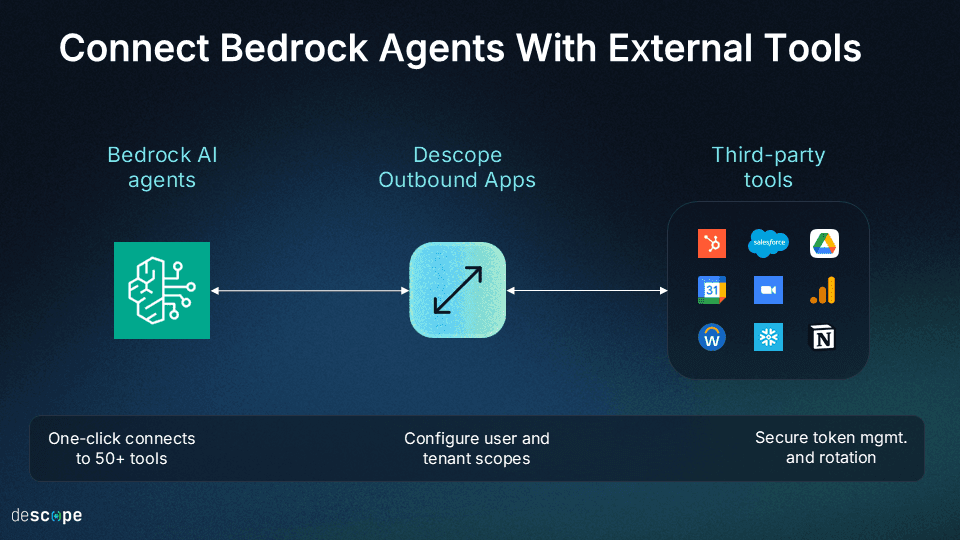
Built for developers: Whether using hosted components or fully custom UIs, Descope gives developers flexibility with SDKs and APIs in React, Node.js, Python, Flutter, and more. The platform fits into any tech stack without locking teams into rigid patterns.
Ideal for
Growing B2B or B2C apps that want low-effort auth, passwordless options, and flexibility across environments.
Firebase Authentication
Overview
Firebase Authentication is a lightweight auth solution within Google’s Firebase platform, built for quick setup and ease of use. It’s especially well-suited for small teams and early-stage apps. Firebase Auth supports standard authentication methods and integrates seamlessly with other Firebase services, including Firestore, Cloud Functions, and Firebase Hosting.
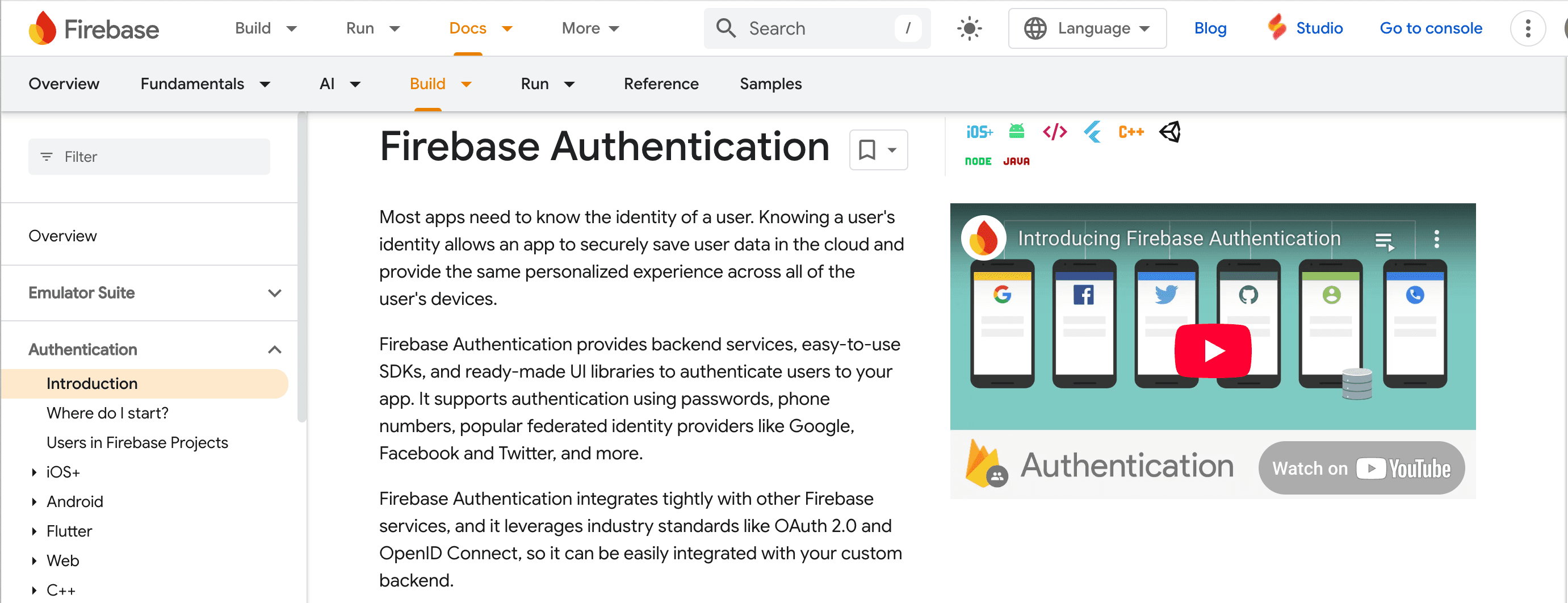
Key capabilities
Supports authentication methods including email and password, social login, phone number, and anonymous users
Integrates with SDKs for web, Android, iOS, and and other popular frameworks
Includes prebuilt user interfaces for login and signup flows
Integrates with other Firebase tools such as Firestore, Cloud Functions, and Firebase Hosting
Strengths
Simple setup and integration: Developers can enable common authentication methods through the console and use client-side SDKs for implementation.
Support for mobile and cross-platform frameworks: Firebase works with Android, iOS, and other frameworks like Flutter.
Native integration with Firebase tools: Firebase Authentication is designed to work with other Firebase services such as Firestore, Realtime Database, and Firebase Hosting.
Ideal for
Mobile-first apps or early-stage teams that want a plug-and-play auth layer with minimal overhead.
Keycloak
Overview
Keycloak is an open-source identity and access management platform developed by Red Hat. It supports authentication, authorization, and user federation across applications and services. Keycloak gives organizations full control over login flows, user management, and identity provider integration, making it suitable for teams that need a self-hosted solution with flexible protocols and customization options.
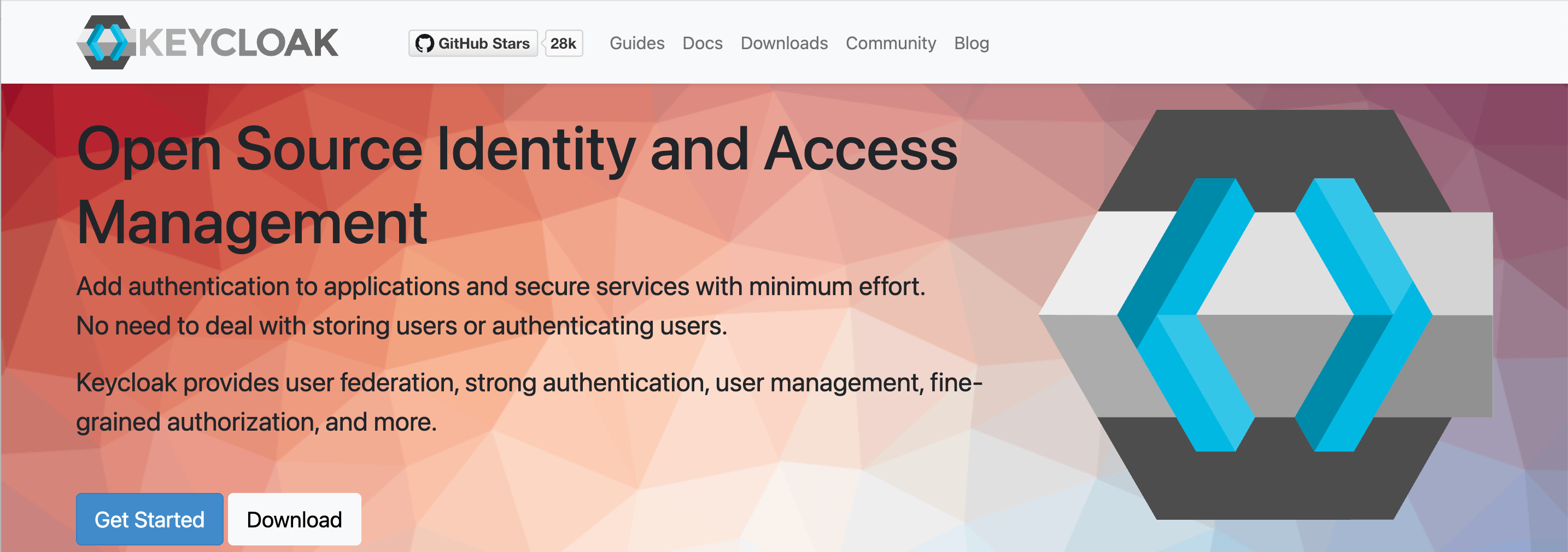
Key capabilities
Supports self-hosted deployments with options for clustering and high availability
Provides a built-in admin console for managing users, roles, and authentication realms
Allows customization of login interfaces and authentication flows
Offers native support for standard protocols including SAML, OIDC, and LDAP
Strengths
Protocol support for enterprise environments: Keycloak includes built-in support for SAML 2.0, OpenID Connect, and LDAP, making it suitable for organizations that need to integrate with legacy systems or multiple identity providers.
Customizable interfaces and authentication flows: Teams can tailor login pages, user journeys, and authentication behavior using Keycloak’s flow configuration and SPI.
Open-source and self-managed flexibility: Keycloak is fully open source and can be deployed in any environment, without licensing costs or feature limitations.
Ideal for
Organizations with in-house DevOps expertise that prefer a self-hosted solution and require full control over the authentication stack
Auth0
Overview
Auth0, now part of Okta, is a widely used identity platform that offers hosted authentication with support for SSO, social login, and role-based access control. It is often seen as a more user-friendly alternative to Amazon Cognito, with a cleaner interface and strong enterprise capabilities.
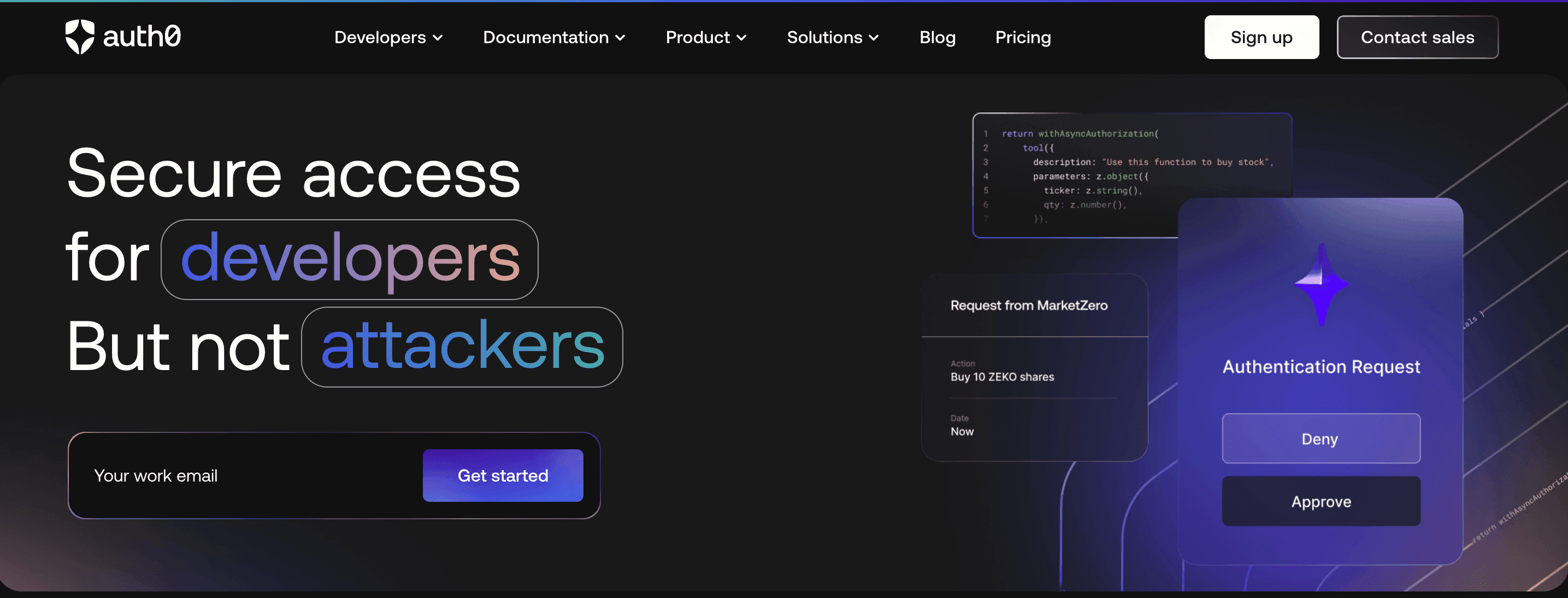
However, teams may encounter challenges as they scale. B2B multi-tenancy often requires custom workarounds, pricing can rise quickly with advanced features, and customizing login flows may involve more engineering effort than expected.
Also read: The Top 5 Auth0 Alternatives for Modern App Builders
Key capabilities
Hosted login pages with customization through branding and rules
Support for SAML, OIDC, and social identity providers
Extensibility via Actions, Hooks, and comprehensive APIs
RBAC and multi-factor authentication
Admin dashboard for managing users, connections, and logs
Strengths
Enterprise support: Includes SSO, directory sync, and federation features needed for large organizations
Developer resources: Offers solid documentation, multiple SDKs, and a large community of developers and integrations
More intuitive than Cognito: Easier setup and user management compared to Cognito’s more fragmented experience
Ideal for
Teams that need a hosted identity provider with enterprise features and are comfortable managing customizations, support gaps, and pricing tiers as they grow.
Also read: Detailed Descope vs Auth0 comparison
Microsoft Entra ID
Overview
Microsoft Entra ID, formerly known as Azure Active Directory, is Microsoft’s cloud-based identity and access management service. It’s widely used by enterprises to manage workforce and customer identities, especially in environments built on Microsoft 365, Azure, or hybrid infrastructure. It offers support for enterprise use cases such as SSO, conditional access, and identity governance.

Teams not fully embedded in the Microsoft ecosystem, however, may find integration and customization more complex, particularly for developer-led SaaS products or multi-tenant B2B applications.
Key capabilities
SSO across Microsoft apps, third-party SaaS tools, and custom applications
Conditional access policies based on user context, device state, and risk signals
Integration with Microsoft 365, Teams, and Azure services
Identity governance, entitlement management, and access reviews
Strengths
Enterprise alignment: Deep integration with Microsoft services makes it a strong fit for internal apps and enterprise SaaS
Compliance-ready: Meets a wide range of enterprise and government compliance standards
Identity governance features: Native tools for managing user lifecycle, permissions, and audit trails
Ideal for
Enterprises already using Microsoft 365, Azure, or hybrid environments that need strong identity governance and workforce access management.
Conclusion
Amazon Cognito can be a solid starting point for auth in AWS-native apps, but it’s not always the best long-term fit. Whether you’re price sensitive, struggling with SSO, or building for a multi-tenant scenario, there are better options.
Descope stands out for its developer-friendly design, passwordless support, visual workflows, prebuilt UI components, support for B2C, B2B, partner, and agentic AI use cases, but each platform above has a unique strength depending on your stack and growth stage.
For more detailed information on Descope, check out our docs. If you'd like a demo, meet with our auth experts. Also, if you want to try Descope yourself, sign up for a Free Forever Account and start using Descope today!

